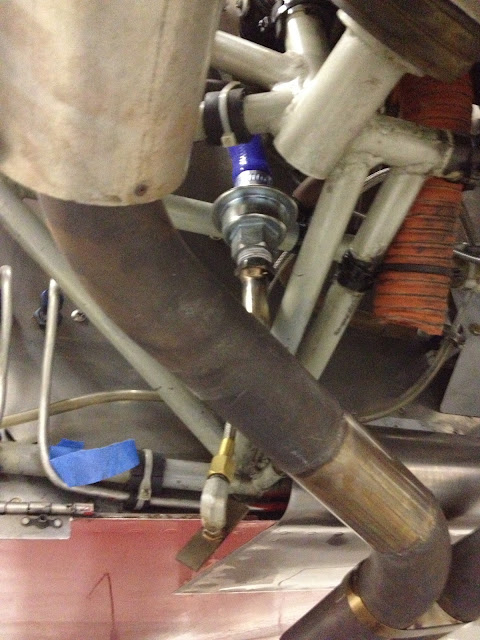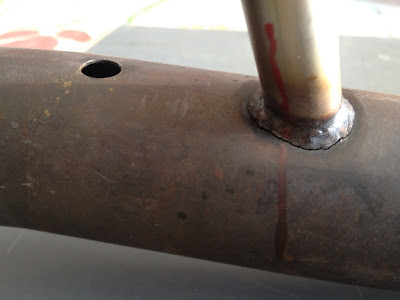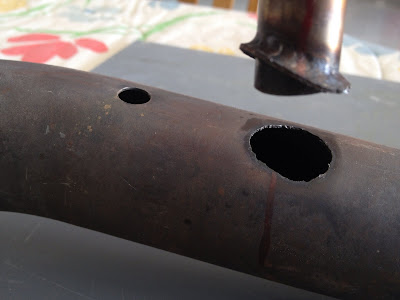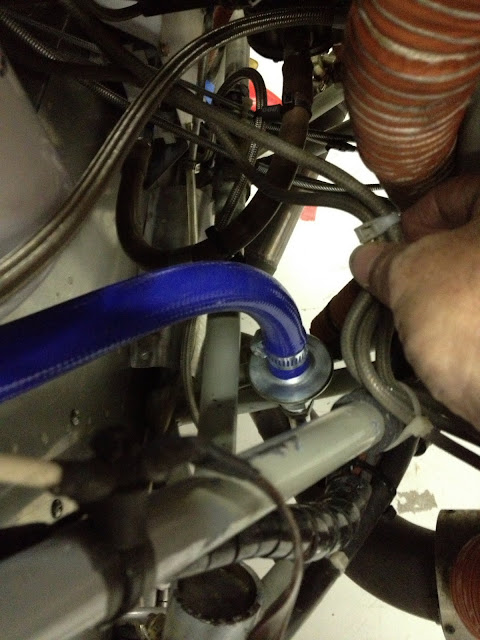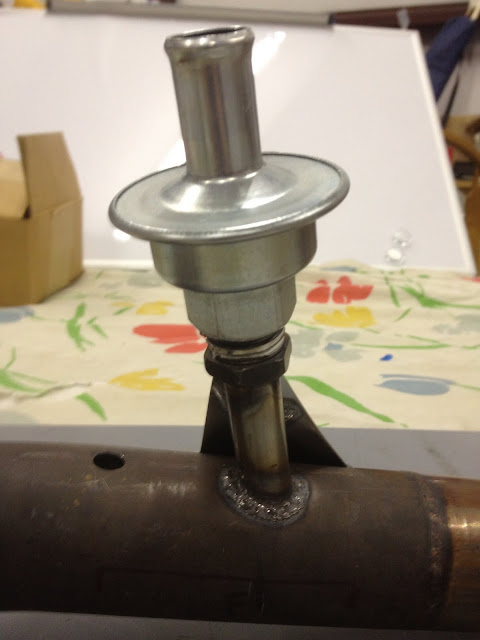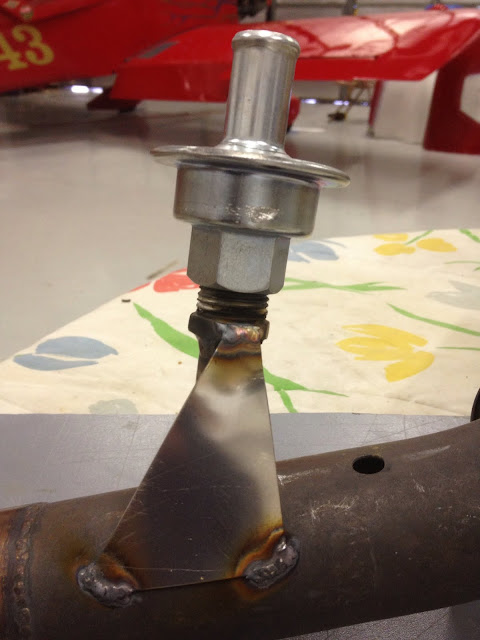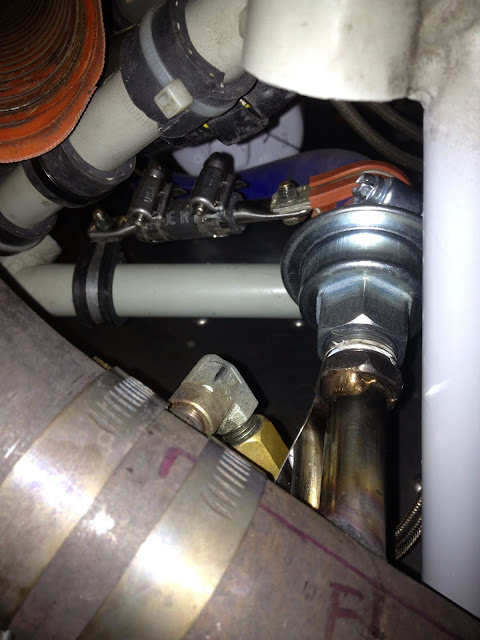Gash
Well Known Member
I have 55 hours on my Antisplat Aero Oil Separator and have been extremely pleased with it. My belly is literally spotless. I purchased and installed the full ASA Oil Separator setup, including the separator, install kit and crankcase vacuum valve with weld in tube fitting.
With the cowl off today, I noticed this:

It looks like 55 hours of engine vibration was enough to break the weld on the #3 exhaust pipe. The fitting is just resting in the hole and can be pulled up and wiggled around. The weld is completely broken. I had the welding done at a reputable place that knows how to do stainless steel exhaust jobs.
I have four questions if anybody could help me out:
1) Is it safe to fly the airplane on a short flight, for example, to ferry it to someplace where I can get the exhaust pipe and vacuum fitting repaired? How about longer flights while waiting to get this fixed?
2) Is there a better way to install this fitting the next time around? I don't want to keep repairing welds that break from temperature and vibration issues. Would it be better to attach the fitting with a nut? If so, how would I avoid exhaust leaks at such a connection?
3) If welding is the only way to repair, what type of place should I take it to next time for a better weld? Any specific recommendations by name?
4) Finally, this is a Vetterman 4-pipe exhaust. Is it possible to disconnect the last section of the pipe at the joint, or do I need to drop the whole pipe and get a new one? I have no experience with exhaust repairs.
Thank you in advance for any suggestions you can provide!
With the cowl off today, I noticed this:

It looks like 55 hours of engine vibration was enough to break the weld on the #3 exhaust pipe. The fitting is just resting in the hole and can be pulled up and wiggled around. The weld is completely broken. I had the welding done at a reputable place that knows how to do stainless steel exhaust jobs.
I have four questions if anybody could help me out:
1) Is it safe to fly the airplane on a short flight, for example, to ferry it to someplace where I can get the exhaust pipe and vacuum fitting repaired? How about longer flights while waiting to get this fixed?
2) Is there a better way to install this fitting the next time around? I don't want to keep repairing welds that break from temperature and vibration issues. Would it be better to attach the fitting with a nut? If so, how would I avoid exhaust leaks at such a connection?
3) If welding is the only way to repair, what type of place should I take it to next time for a better weld? Any specific recommendations by name?
4) Finally, this is a Vetterman 4-pipe exhaust. Is it possible to disconnect the last section of the pipe at the joint, or do I need to drop the whole pipe and get a new one? I have no experience with exhaust repairs.
Thank you in advance for any suggestions you can provide!





